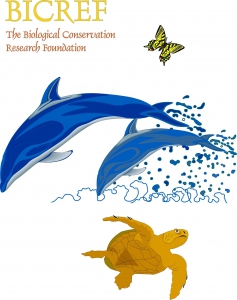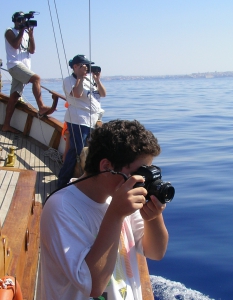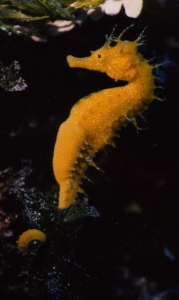Biodiversity for sustainable development Education, science and innovation for biodiversity conservation needs The 22nd May 2015, marked the International Day dedicated to Biological Diversity. This year’s theme reflects the importance of efforts made at all levels to establish a set of Sustainable Development Goals (SDGs) as part of the United Nations Post-2015 Development Agenda and the relevance of biodiversity for the achievement of sustainable development.

In our unique Maltese Islands, It is not rare to walk down toward what seems at first sight a breathtaking natural setting only to become disappointed at all sorts of wastes and nasty smells as one gets closer. While our roundabouts are managed with all sorts of flowers and trees, our green areas are often not monitored or managed to provide healthy habitats for typical Maltese plants and animals. Valleys for example are often full of rubbish, blocking the watercourses and degrading the whole ecosystem. Both locals and tourists alike increasingly aspire to enjoy nature in various parts of these Islands and the Malta Tourism Authority had come up with some useful booklets suggesting various walks.
These country-side walking tracks and trails have also been studied by students of the Conservation Biology Research Group at the Department of Biology, University of Malta (CBRG-UoM) in order to see how species and habitats varied along each track. Such information is necessary to educate about specific habitats and species one may encounter while walking past. However this information allows for monitoring the status of such habitats and species with time. Eco-tourism, with its focus on local profit-making activities linked to nature and its conservation needs should be encouraged to flourish. Diversifying tourism activities away from unsustainable mass tourism is necessary as the latter rarely allows for effective conservation of those same natural resources that attract tourists.
Conservation risk assessments need to be implemented before any planning aimed at preserving biodiversity and developing sustainably. As technology has advanced, so have the methods used for such scientific assessments. One may often be surprised that we know more about the moon than we know about the diverse forms of life on Earth and how these play a vital role in important processes of life both during the day and during the night.
Just as birds and reptiles play a role in controlling insects and snails during the day, bats and hedgehogs do so during the night: An eco-friendly 24-hour totally-free pest-control system which very often goes unnoticed to the point that we use extensive amounts of poisonous insecticides and snail-killing substances in order to feel pest-free. Unfortunately, all these poisons have a way of coming back to us in many ways, such as, through fruit and vegetables covered with them and the loss of important pollinating or pest-controlling insects such as bees or ladybirds respectively.
Also ignored is the fact that through the extensive use of insecticides we allow problem species to become able to survive these man-made defences, while eliminating our natural allies. As humans may have lost sight of the essential role of biodiversity, wrongly believing that we can reinvent nature in our own ways, education at all levels needs to reintegrate the lost values and traditional knowledge linked to nature and its appreciation. Concurrently science and innovation in conservation genetics, species and ecosystem research are to be valued as important requirements for knowledge-based strategies and actions.
 The CBRG-UoM, assisted by BICREF, has undertaken various innovative studies on local and regional biodiversity at genetic, species and ecosystem level considering issues linked to diverse species such as, the Maltese honey bee, hedgehogs, bats, reptiles, snails on land to starfish, crabs, squids, octopuses, gelatinous species, all sharks, rays, fish (coastal and pelagic), dolphins, whales, turtles found in Maltese waters and whole communities of species at conservation areas and in different ecosystems.
The CBRG-UoM, assisted by BICREF, has undertaken various innovative studies on local and regional biodiversity at genetic, species and ecosystem level considering issues linked to diverse species such as, the Maltese honey bee, hedgehogs, bats, reptiles, snails on land to starfish, crabs, squids, octopuses, gelatinous species, all sharks, rays, fish (coastal and pelagic), dolphins, whales, turtles found in Maltese waters and whole communities of species at conservation areas and in different ecosystems.
While considering human activities affecting the status of wildlife, researchers also work with stakeholders aiding in local awareness too. As human activities and movements across the globe have also affected the movement of species, we are increasingly faced with the added problem of alien species which bring with them imbalances in the natural setting.
Imbalances which may cost us the loss of health: This applying to ecosystems, domestic animals and even ourselves: Alien species such as, the Brown mulberry long horn beetle has affected the health of local trees while The Asian tiger mosquito, has invaded many countries throughout the world biting dogs, cats and other animals, as well as people. Asian tiger mosquitoes bite multiple hosts potentially transmitting diseases, such as Encephalitis, Chikungunya Fever and Dengue Fever amongst others.
So apart from being aware of such alien species, their impacts and ways to stop their breeding without negative side-effects, it is important to be aware of possible local insectivorous species which feed on mosquitos too and may help control them in a natural way. Such insect predators include frogs, birds, geckos and bats. Protecting oneself and one’s pet with natural insect repellant oils is useful prevention.
Children, youths and adults alike benefit from outings to natural locations which should be healthy experiences apart from interesting due to the diversity of life encountered. As most children no longer find time nor accessible fields to play and to discover nature on an everyday basis, educational services should promote nature observation and discovery.
Well-produced local documentaries may also be integrated in formal and informal educational processes in order to increase local exposure to nature’s beauty and importance. In order to increase outgoing interest and care for our countryside, valleys, cliffs, garigue, woodland, freshwater streams, caves and coasts, biodiversity conservation research, education and management are indispensable.
The latter are important activities that need jobs to cater for them, however this awaits implementation even though biodiversity conservation is a responsibility of every state in the world including every member state of the EU. Conservation needs to be more than short-term projects that come and go with minimal tangible return on investment, especially when frantic human activities and developments dominate incessantly and everywhere.
Biodiversity conservation cannot be just long lists of regulations on paper, when few know what and why these regulations are there for, as all citizens are required to collaborate in this important task. Conservation cannot be just declarations followed by superficial actions diverting from effective results. The 2010 target to halt biodiversity loss found governments faced with the inadequacies of realising that the main target was missed therefore pledging for drastic improvements and accomplishments by 2020.
 As we approach this new target is society more knowledgeable and involved with biodiversity protection both directly and indirectly as its life-sustaining responsibility? For example, agriculture and fisheries need to be sustainable for both the natural resources these activities heavily depend on, as much as for the individuals wishing to continue making a living from such natural production.
As we approach this new target is society more knowledgeable and involved with biodiversity protection both directly and indirectly as its life-sustaining responsibility? For example, agriculture and fisheries need to be sustainable for both the natural resources these activities heavily depend on, as much as for the individuals wishing to continue making a living from such natural production.
These sectors urgently need new strategies to efficiently promote small-scale, ecosystem-based use of natural resources, while empowering fishermen and farmers to improve their futures. Environmental economics also shows that development can no longer occur at the expense of impoverishing biodiversity, therefore the contributions of conservation science and education to life-sustaining development and progress must be integrated in socio-economic endeavours, businesses and resource exploitation. Will these needs be met on time?
An educational video message for some more information is available at: https://www.cbd.int/2011-2020/
For further information on local conservation research and awareness projects contact: The Biological Conservation Research Foundation, BICREF ngo: bicref@gmail.com

